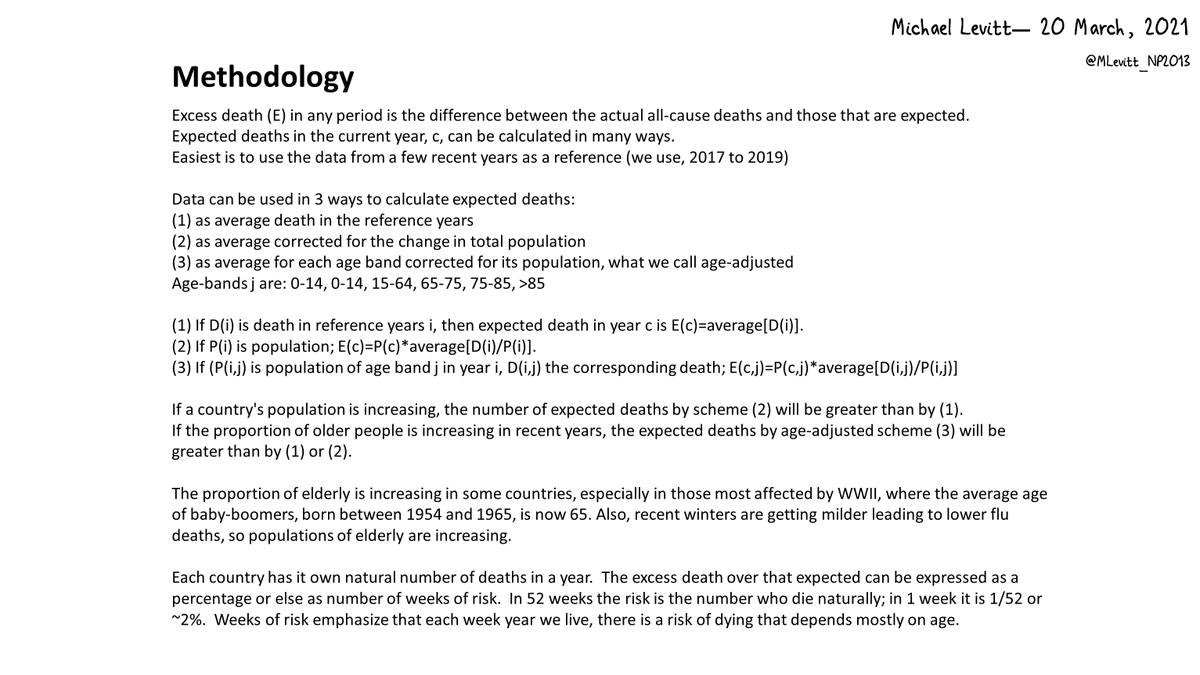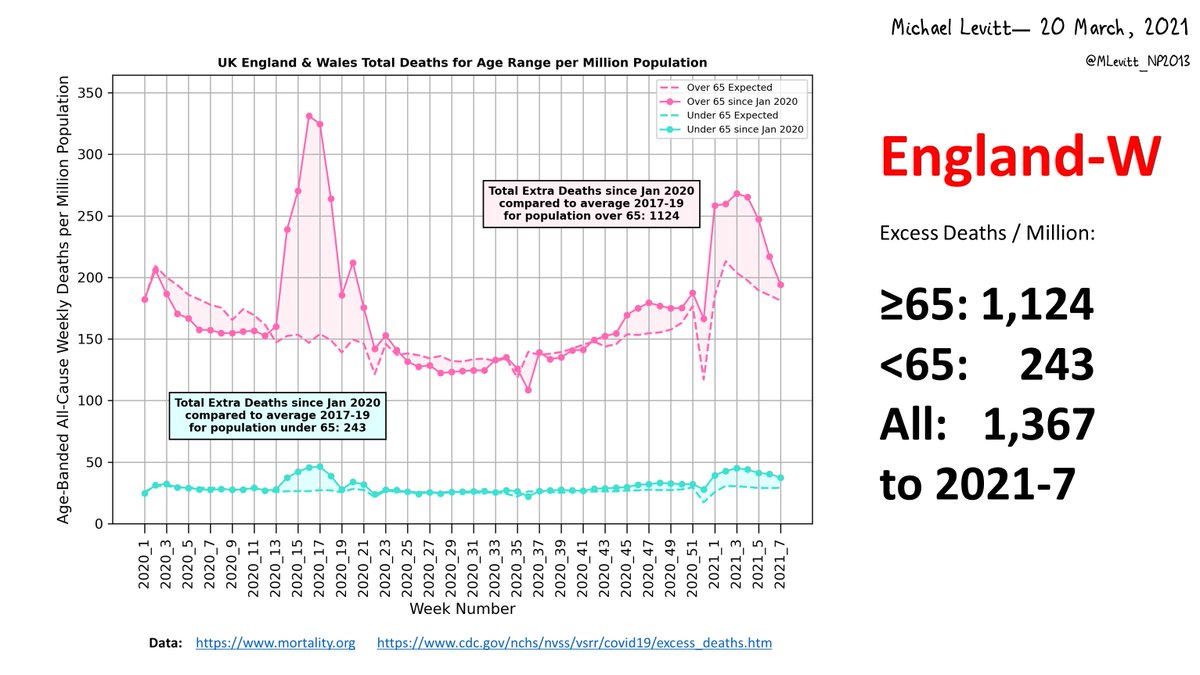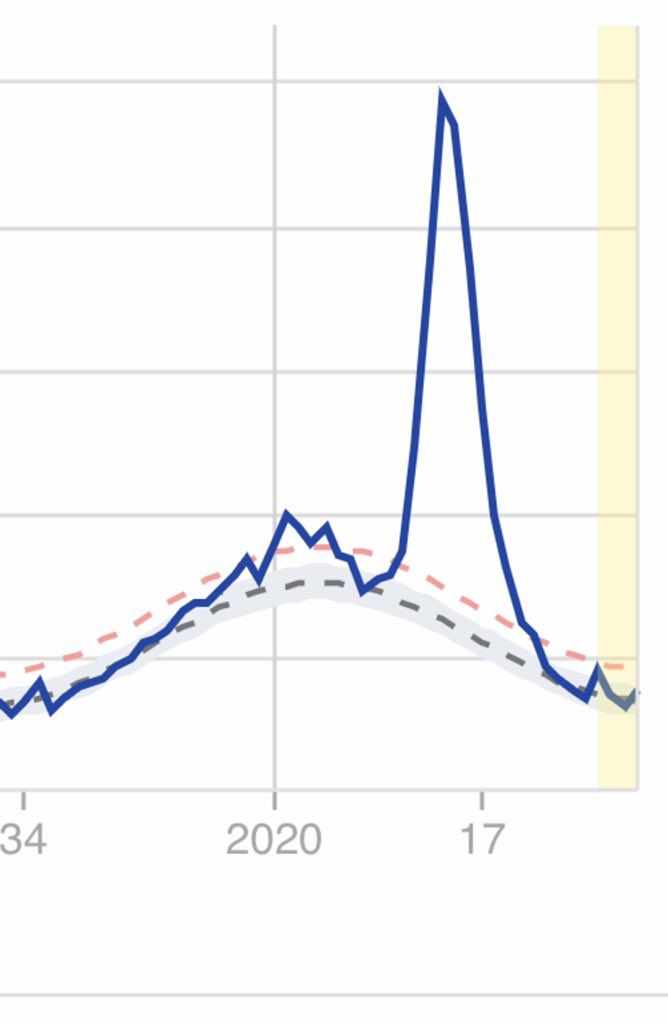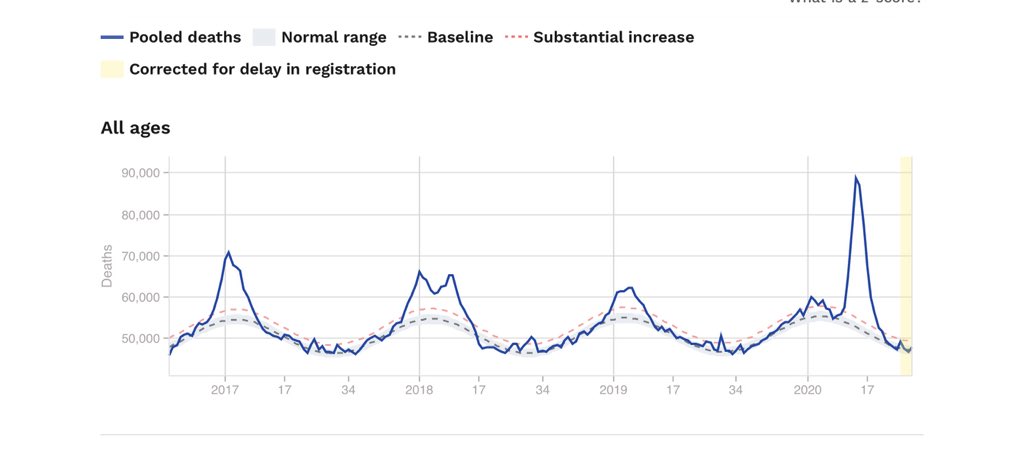
1/n
Growth of COVID-19 outbreaks may seems specialized, but is crucially important.
If growing by commonly used Logistic function, early growth is exponential & forecast of outcome is impossible.
For Gompertz function, growth is slowing from start allowing forecast of end.
Growth of COVID-19 outbreaks may seems specialized, but is crucially important.
If growing by commonly used Logistic function, early growth is exponential & forecast of outcome is impossible.
For Gompertz function, growth is slowing from start allowing forecast of end.
2/n
Described on YouTube year ago, this is still not widely understood
Then we focused on small outbreaks (1000's cases) well-contained in New Zealand and South Korea.
Stimulated by @Marco_Piani & @PienaarJm, we now analyze Lompardy, NYC, UK & Spain.
Described on YouTube year ago, this is still not widely understood
https://twitter.com/MLevitt_NP2013/status/1412982246554931206?s=20
Then we focused on small outbreaks (1000's cases) well-contained in New Zealand and South Korea.
Stimulated by @Marco_Piani & @PienaarJm, we now analyze Lompardy, NYC, UK & Spain.
3/n
Before releasing results & Excel fits, I describe the growth functions and then show raw data.
If you want to learn about growth functions, study the properties of the functions so that you can identify how the real data changes.
I got this wrong from 1-Feb-20 to 20-Mar-20.
Before releasing results & Excel fits, I describe the growth functions and then show raw data.
If you want to learn about growth functions, study the properties of the functions so that you can identify how the real data changes.
I got this wrong from 1-Feb-20 to 20-Mar-20.

Never trusted reported cases. numbers Reported COVID-19 deaths are backed up in some places by excess death in time of COVID-19. @MalJone66192992
Outbreaks in area separated from another by weaker contacts is limited & stops when susceptibles are exhausted @stevenmosher
Outbreaks in area separated from another by weaker contacts is limited & stops when susceptibles are exhausted @stevenmosher
• • •
Missing some Tweet in this thread? You can try to
force a refresh


































